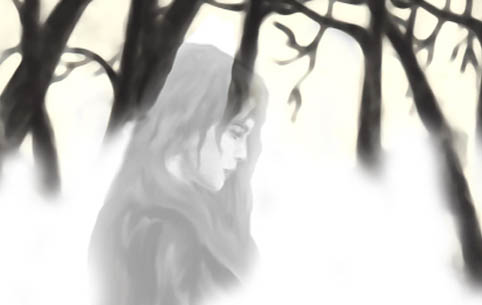 From London's earliest days as a Roman settlement,
it was a patchwork of both materials and cultures. It was founded
as a trade town, situated on a wide, deep river, but inland enough
to resist a coastal attack, and trade has marked its history
on both sides of the Shroud ever since. Alfred the Great re-founded the city inside the walls to protect his people from attack, and the Restless were forced to find more innovative ways of avoiding the population. At first, they stuck primarily to the back streets, ducking out of the way of the passing Quick. Before long though, London's Wraiths were learning how to jump between rooftops, across the small stone streets, holding their meetings on the roofs of small wooden huts and larger, stone-built, Roman dwellings. It was here that London's tradition of roof-wraiths was founded. The government of London changed again with William the Conqueror's invasion, and Restless of different cultures - Saxon, Roman and Norman - began to mix on the other side of the Shroud, trading with one another and with Stygia. When William built the Tower of London in 1080, London's Wraith's found themselves a new ally in the shape of the Corax, and the Dead maintained good relations with the ravens for nearly a thousand years. Work on a large haunt away from the city's population began in earnest after 1176, when the ill-fated, wooden bridge across the Thames was replaced with a stone one. Early London Wraiths used those skilled in Inhabit and Outrage to bring huge quantities of stone across the Shroud, and began building. Soon, the city had a place where the intrepid Wraiths travelling to and from Stygia could meet without interference from the living. Simple, pale towers were soon constructed over the roofs of the houses on the bridge, giving the dead a place to gather over the heads of those still living. The new stone-built bridge in the Skinlands also wrought many changes in the lands of the living. The arches of the bridge were small, and restricted the flow of the river, so that come winter, the Thames would freeze over. People started to skate on it and on the surrounding mashes with ice-skates made from animal bones, and wintertime markets were soon taking place on the river throughout the colder months. Trade continued to boom, and the community of the Dead swelled, with hundreds of relic boats and carts rolling up the river to the entrance of the byway, transporting goods to Stygia and other areas of the Kingdom of Iron, as well as other Dark Kingdoms across the world. Agents of the Hierarchy regularly passed through the city, maintaining a strong hold over all who resided there, protecting them, and the precious byway, from harm by outside forces. |